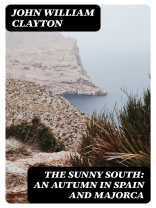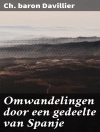In 'The Sunny South: An Autumn in Spain and Majorca, ’ John William Clayton invites readers on a captivating journey through the evocative landscapes and rich histories of Spain and Majorca during the autumnal season. The book deftly combines travel writing with personal reflection, employing a lyrical style that captures the vibrancy of the regions while invoking the nostalgia of a bygone era. With keen observations and vivid imagery, Clayton immerses readers in the cultural tapestries and natural beauty, creating a narrative that balances descriptive prose with analytical insight into the local customs and historical significance of each location visited. Clayton, a seasoned traveler and writer with a deep appreciation for the arts, developed an enduring fascination with Spain’s diverse tapestry of influences—ranging from Moorish architecture to Mediterranean lifestyles. His experiences and extensive research into the region’s history resonate throughout the text, illuminating the transformative power of travel and the universal search for beauty in unfamiliar places. This background infuses the narrative with authenticity and depth, revealing the profound connection between the traveler and the lands explored. For readers seeking both adventure and enlightenment, 'The Sunny South’ serves as an exquisite portal into Spain and Majorca. Clayton’s evocative prose evokes not just a sense of place but also a yearning to engage with the world on a deeper level. This book is recommended for anyone passionate about travel literature, cultural exploration, and the art of observation.
O autorze
John William Clayton emerged as a literary figure with his published accounts of the Iberian landscapes, conveying the nuances of Spanish and Majorcan environments and societies. Best known for his travel literature, 'The Sunny South: An Autumn in Spain and Majorca’ stands as a significant work in his oeuvre that captures both the quintessence and idiosyncrasies of Southern Europe during the period. Clayton’s prose is marked by vivid descriptions and a reflective tone that invites readers to journey with him both geographically and emotionally. While he navigates through the rustic countryside, bustling cities, and serene islands, Clayton adeptly balances a tourist’s enthusiasm with an anthropologist’s keen eye, offering insights into the culture, customs, and the very soul of the regions he explores. This book, rich in the contemplative charm of 19th-century travelogues, is a testament to Clayton’s ability to engrain his narrative with historical context and personal narratives. Clayton’s work continues to resonate with aficionados of travel writing and enthusiasts of Spanish culture due to his detail-oriented approach and his capacity for translating the subtleties of experience into engaging literary form.












